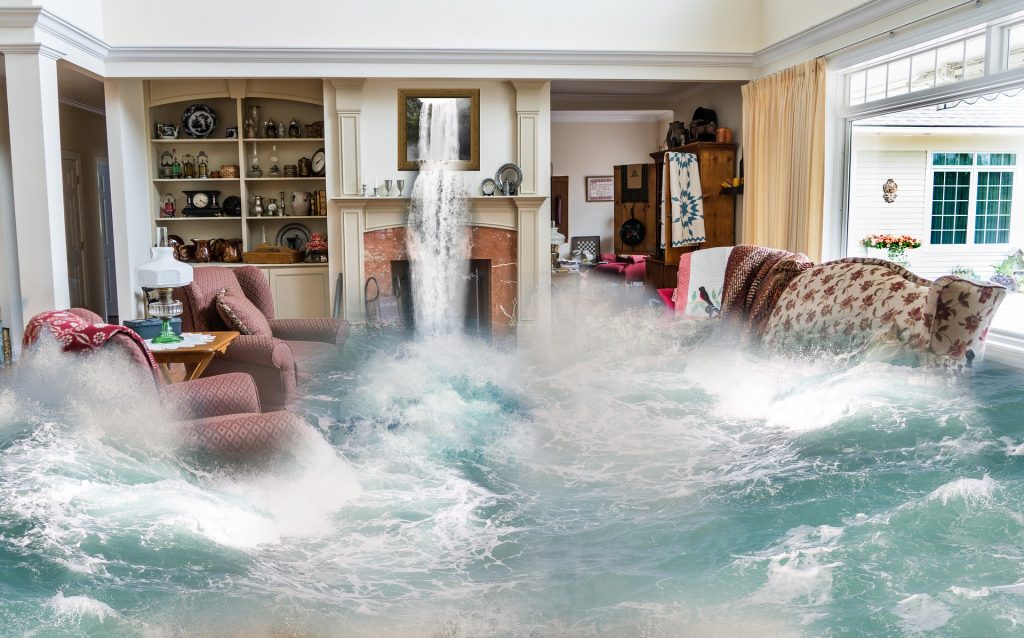 Living in areas prone to summer flooding means you must take quick action if and when flooding occurs. Why? Because all that moisture can ruin your home and your belongings. While awaiting a call back from your insurance company and maybe a visit from a professional mold mitigation company, you can get started cleaning up.
Living in areas prone to summer flooding means you must take quick action if and when flooding occurs. Why? Because all that moisture can ruin your home and your belongings. While awaiting a call back from your insurance company and maybe a visit from a professional mold mitigation company, you can get started cleaning up.
Water and summer heat are breeding grounds for mold that can grow in any areas left damp after a flood. So, it’s important to follow a few tips to help ensure your home does not become a petri dish.
Think Safety Always
You should begin cleaning up and drying out your home right away, but don’t let this urgency mean you skimp on safety. Remember, flooding means there could be mold or other bacteria growing in and on items in the home. Keep your children and pets out of the house during the cleanup process to avoid making them sick.
If your HVAC ducts got water in them, do not turn them on until you can have them inspected. They'll need to be cleaned to remove bacteria from floodwater. Before entering your home, make sure your electricity isn't on if you believe electrical wiring was affected by water. You should not enter the home until you're sure there is no risk of electrocution.
You must wear a mask, gloves and some good water-resistant footwear to keep yourself and anyone working with you safe. Depending on the extent of the flooding, you may want to wear hip- or waist-high boots or waders. Don't touch any items in the home without wearing gloves, and throw out any food that has come into contact with floodwater.
Drying Out the Home
Do you know mold can start growing in as little as 24 hours? So, it's important to get in there and launch the drying process. This includes opening doors and windows to let air in and using a wet/dry vacuum to begin sucking water from carpets.
You should also invest in the equipment needed to help dry out the home. Carpeting is hard to dry out and is often an area where mold can grow quickly. Investing in a portable fan that is stackable, lightweight, and easily portable can make drying out carpet a little quicker and easier, especially if you live in a coastal area that floods often. The key is to get air flowing through the home in order to dry out wet basements, too. You can also place fans around the house to help circulate air.
Get Damaged Items Out
Depending on the amount of water in the home, you may have water damage in the basement, but sometimes the water rises into the first floor of the house as well. Unfortunately, this means you'll need to throw out water-soaked belongings. This includes many items in your home, such as:
● Carpeting and padding
● Pillows and mattresses
● Baby toys
● Stuffed animals
● Books and other paper products
● Upholstered furniture
● Rugs
● Cosmetics
● Wall coverings
● Food items
● Anything made of foam rubber
● Insulation and drywall
You can usually salvage clothes — but wash them in hot water—and upholstered furniture may be salvageable if it can be professionally cleaned. Wood furniture may be saved if you quickly take it outside and remove any drawers or shelves to allow it dry out. However, keep in mind that wood does soak up water and can become moldy and unsalvageable.
Always take photos of items damaged by floodwaters for insurance purposes. To decide what to keep and what to save, consider the monetary and sentimental value. If it’s valuable to you, check with mold mitigation specialists to determine if you can properly clean the item.
Disinfect the Home
One the home is drying out and you've removed all the damaged items, you can begin disinfection process. Clean walls and floors using disinfectant cleaner and warm water. You can also use a solution of 1 cup of bleach mixed with 5 gallons of water.
Go over these areas more than once to make sure you’ve removed any bacteria and germs that may have come in with the floodwater. Sometimes floodwaters are contaminated with sewage that can make your family sick.
Prevent Future Damage
Once you've been through a flood, you may want to consider what steps you can take to reduce the damage next time, especially if you live in a flood-prone area.
Store your belongings up high. Instead of storing items in your basement, place them in the attic. At the very least, move them up off the floor and keep items in plastic storage bins.
Use spring cleaning time as an excuse to get rid of any items you no longer use. The less clutter you have, the less you’ll have to clean up should your home flood again.
While there’s not much you can do to stop acts of nature, you can jump in right away and begin cleanup to make your home safe, clean and livable as soon as possible. Have a plan in place and invest in any equipment you might need so it’s on hand and ready to clean up your waterlogged home.








Very nice and effective piece of advice Megan, flooding, like other natural calamities, could create havoc in our lives and these steps are vital to protect us from fatal accidents like electrocution.